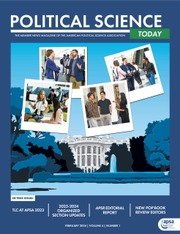Election forecasting has become big business in the social sciences and US media industry. Everyone is curious who will win, but from an academic point of view, it offers an opportunity for researchers to precisely assess the value of their theoretical framework and hypotheses. With the increasing availability of data made possible by new technologies, the toolbox of forecasters has considerably expanded over the last two decades. Over the years, forecasters have relied on vote intention polls, statistical models, crowdsourcing, election markets, machine learning, and big data, among other methods, to provide predictions of election outcomes and geopolitical events.
The treasure trove of vote intention surveys that have been conducted since the advent of modern public opinion polling in the 1930s, vote and seat share forecasts by modelers and aggregators, and the countless hours of speculation by pundits and journalists about parties’ and candidates’ electoral prospects, are clear testimonies to the importance of forecasting in election campaigns. Although their motivations and level of objectivity may differ, pundits, pollsters, researchers, politicians, and voters all engage in speculations about who will win and by how much.
Forecasting of US elections has been a regular feature of PS since the 2004 contest. This special issue follows in this tradition, but seeks to open up the field to a still more diverse set of contributions. In a time of increasing ideological and affective polarization in the United States and growing concern over disinformation, it is also important to recognize the various challenges faced by forecasters in a highly partisan environment, one where suspicions of bias are not easily extinguished.
The objectives of the special issue are as follows:
-
1. keep track of the performance of existing models and methods in forecasting election outcomes;
-
2. identify methodological innovations in the forecasting of US elections;
-
3. determine the limits and challenges of election forecasting;
-
4. draw conclusions about the potential consequences of forecasting on US public opinion.
We are interested in article-length (4,000 word) submissions for this special issue that address one or more of these objectives. Examples of submissions might include papers that draw on the topics listed below:
-
1. provide election forecasts for the 2024 presidential, House, Senate, or gubernatorial elections;
-
2. predict turnout, including the participation of specific sociodemographic or minority groups;
-
3. describe new or emerging methodologies/tools to forecast election outcomes;
-
4. provide a comparative perspective on election forecasting as it is conducted in the United States and in other democracies;
-
5. offer a critical analysis of election forecasting, its limitations, and/or its potential consequences on citizens’ behaviors and attitudes.
Contributions must be submitted to PS via Editorial Manager on or before July 17, 2024.
Timeline: All manuscripts will be peer-reviewed on an accelerated timeline. Scholars submitting articles to the special issue should be prepared to serve as referees for special issue submissions. Authors who receive R&Rs on the initial submission will be required to submit the revision no later than September 2. Articles accepted for publication will be due by September 25.
Publication: Accepted articles will be posted on the PS: Political Science & Politics website in mid-October, 2024. The special issue will be published in the PS: Political Science & Politics journal in 2025.
To Submit: Submit manuscripts through the online system at: www.editorialmanager.com/ps.
Length: Manuscripts must be fewer than 4,000 words, including notes and references.
Style, Format, References: Manuscripts must be submitted in Word, should include in-text citations that correspond with endnotes and references conforming to the Style Manual (Chicago Manual of Style, 17th edition). An online appendix can be uploaded for supplementary and supporting material.
[Please indicate that your submission is designated for this Special Issue in Editorial Manager.]
Questions: Please submit any questions to our editorial team: [email protected].


